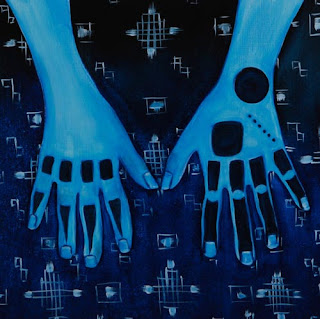 |
| Mixed-race leaders retreat outside of San Francisco in 2008 where I met representatives from MAVIN as well as folks I have since gone on to collaborate with for events, programs, and projects. |
Giving is hard. I’m not talking about birthday or Christmas
gifts here. There is a social contract that you must give back to those who you
love and who have loved and cared for you. That type of giving is easy. I’m
talking about giving your time and money to non-profits. This is optional
giving. After Black Friday and Cyber Monday, November 27, 2012 has been
designated “Non-Profit Tuesday.” What do you believe in today? What do you want
to take the time to stand behind and support?
I’ve spent most of my life being selfish, trying to build a
career and family and take care of my own, but after the U.S. economy tanked in 2008
and my thin economic security was knocked out from under my feet, it coincided
with a time when I have increasingly been asked to step up and give back. While this hasn't always been easy, I
want to share just a few things I got back in return that I really wasn’t
expecting.
Make a list and check it (send $) twice today. Consider
giving over the long haul. The best investments take time to mature.
Here are my top three non-religious non-profit
suggestions for today:
The JASC is based in Chicago and provides local services and
programs/national and international research resources.
Mission (new mission as of Fall 2012!):
·
JASC engages people of all ages to experience
Japanese American history and culture and to improve their wellbeing through
innovative, high quality programs and services tailored to the multicultural
community.
We accomplish our mission through the work
of highly trained and enthusiastic staff and volunteers and
proactive collaboration with other agencies and organizations.
What I gave:
·
Time, expertise, and board dues, donations –
current board member (since 2011).
What I given in return that I didn’t expect:
·
A community in the Midwest to call home.
Although I’ve known of the JASC through their annual Holiday Delight celebration
for many years, I never thought this was a place for me since I’m not from
Chicago and my family was not interned. As I might have expected, I found an
established (founded in 1946!) post-WWII resettlement Japanese American
community legacy with rich archives and values but I also found a community in
the process of changing and expanding to serve a multicultural population which
includes anyone interested in learning about or participating in JA history and
culture. While this may sounds odd to my West Coast friends, being openly
inclusive of mixed-race families, post-1965 Japanese immigrants, Japanese
nationals, and Japanese Americans from other migration streams (e.g., Hawaii)
is new here and I want to be part of this change while at the same time
learning from the archives and community memory about parts of the JA
experience that you don’t hear about on the coasts. I’ve been continually
surprised to see how welcoming the JASC has been to innovative ideas and
building community partnerships.
MAVIN is based in Seattle and provides local
programs/national and international research resources.
Mission:
·
MAVIN builds healthier communities by providing
educational resources about Mixed Heritage experiences.
What I gave:
·
Time, expertise, and board dues - former working
board member (2010-12) and current advisory board member.
What I was given in return that I didn’t expect:
·
What started from a little magazine feature back
in 2004 in MAVIN magazine on my art and sharing suggestions for the mixedheritagecenter.org
and then meeting and working with folks like Eric Hamako and Louie Gong (see picture above) that has
since led to a network of over 500+ activists, academics, artists, and friends
interested in mixed-race issues. Today, I teach a class on “Mixed Race Art and
Identity” at DePaul University in our Honors program and have been working with other colleagues,
scholars and creatives on the Critical Mixed Race Studies conference, the
Journal of Critical Mixed Race Studies and Wei Ming Dariotis and I have a
forthcoming book and exhibition WarBaby/Love Child: Mixed Race Asian American Art.
Woman Made Gallery
(WMG)
WMG is based in Chicago and provides local programs/national
and international opportunities.
Mission:
·
Woman Made Gallery (WMG) supports, cultivates
and promotes the diverse contributions of women in the arts through exhibitions
and other programs that serve, educate and enrich the community.
What I gave:
·
A little time/expertise to jury a show in 2009
and just a few days or hours of time here and there to suggest ideas in 2011-12.
I became a member in 2011.
What I was given in return that I didn’t expect:
·
Became a feminist and realized this doesn't have
to be an “F-word.” The return on this investment is too immense to list at the
moment. Like the F-word, I’ll keep this short and to the point.
·
Found role models for a sustained and serious artistic
career focused on community engagement.
·
Met an artist from India, Shelly Jyoti, through
Woman Made Gallery. We created a two-woman show, Indigo, that has traveled to venues in Vadodara, New Delhi, Mumbai,
Seattle, Miami and will open in Chicago at the Chicago Cultural Center on
January 25, 2013 5:30-7:30pm. The show runs January 26-April 2, 2013.















